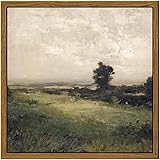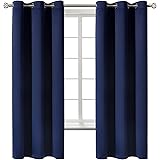Navigating 2025: Unpacking Outdated Interior Design Trends to Elevate Your Home
In the dynamic world of interior design, trends can shift with surprising speed. What was once considered the pinnacle of modern elegance can, in just a few years, begin to feel remarkably dated. In fact, many popular design choices from as recently as five to ten years ago are now making homes appear significantly older. As beautifully highlighted in the video above, discerning homeowners seeking to keep their spaces fresh and inviting need to stay vigilant about these evolving aesthetics.
Whether you’re embarking on a major renovation or simply looking for impactful ways to refresh your living environment, understanding which elements are passé and which alternatives offer a more timeless appeal is crucial. This comprehensive guide delves deeper into the outdated interior design trends for 2025, offering insights and actionable advice on how to gracefully update your home to reflect contemporary sensibilities. By carefully curating your choices, you can ensure your home remains a stylish sanctuary for years to come.
Beyond the Accent Wall: Embracing Color Drenching for Modern Spaces
For a significant period, the accent wall reigned supreme as an easy and impactful way to introduce color and personality into a room. Think back to 2020; these single, boldly painted or wallpapered walls were practically ubiquitous in design showcases. However, as quickly as they surged in popularity, they are now signaling a home styled approximately five years in the past. While their intention was to create a focal point, the stark contrast often felt more disjointed than cohesive in contemporary design.
In contrast to this singular statement, the prevailing trend now champions “color drenching.” This immersive approach involves painting not just one wall, but all four walls, the baseboards, window trim, doors, and even the ceiling in the same harmonious hue. Imagine stepping into a room where every surface contributes to a unified color story, creating an enveloping, sophisticated atmosphere that feels both expansive and cozy. This method applies not only to paint but also to wallpaper and wall molding, creating a continuous flow that makes a space feel larger, more intentional, and decidedly more modern.
The Fading Charm of the Fiddle Leaf Fig: A Greenery Evolution
Plants are undeniably essential for bringing life and freshness into any interior, yet even greenery can fall victim to the fleeting nature of trends. The mighty fiddle leaf fig tree, with its large, glossy leaves, once graced nearly every aspirational interior photo and design blog, becoming an undeniable symbol of chic home decor. Sadly, its very omnipresence has led to its current status as an element that can make your home look about five years behind the curve. Like a fashion accessory that everyone owns, it has lost its distinctiveness.
Today, the preference shifts towards a broader variety of botanical specimens that feel more natural, varied, and less “styled.” Consider the sculptural elegance of an olive tree, the lush simplicity of a Bird of Paradise, or the architectural appeal of a Snake Plant. Even more, embracing a diverse collection of smaller plants, like trailing pothos or vibrant ZZ plants, arranged thoughtfully, offers a more organic and curated feel. The goal now is to integrate greenery that enhances the room’s character rather than serving as a singular, overdone statement piece, reflecting a return to authentic biophilic design.
Sliding Away from Farmhouse: Reimagining the Barn Door
The sliding barn door emerged as a highly functional and aesthetically distinct feature, particularly during the peak of the modern farmhouse movement. Its ability to save space where a traditional swinging door wouldn’t fit, combined with its rustic charm, made it a popular choice. Yet, its strong association with a style that has been receding for several years means that an exposed hardware barn door now firmly dates a space, often back to the early 2010s when farmhouse style first truly took hold.
However, the underlying functionality of a sliding door remains highly desirable in many homes. The solution lies in evolution, not outright elimination. Instead of the bulky, exposed hardware that defines the traditional barn door, designers are now favoring options with hidden hardware. These sleek, minimalist systems allow the door itself to take center stage, often a modern slab door that blends seamlessly with the wall when closed. Alternatively, the classic pocket door offers an even more integrated solution, disappearing entirely into the wall for an exceptionally clean and classic appearance. These refined alternatives provide the same space-saving benefits without the heavy, dated aesthetic of their predecessors.
Ditching the Dazzle: Why Solid Dining Tables Outshine Glass Tops
The glass top dining table once symbolized contemporary elegance and lightness, promising an airy feel and a reflection of surrounding light. Yet, as design preferences have matured, these tables are increasingly perceived as outdated. There’s a certain manufactured quality to them that conflicts with the current desire for natural materials and enduring craftsmanship. Furthermore, they present significant practical challenges that often detract from their aesthetic appeal in everyday living.
In stark contrast, solid dining tables, crafted from wood, stone, or even concrete, embody a sense of permanence and warmth that glass simply cannot replicate. They offer a grounded aesthetic, inviting texture, and the promise of a piece that will age gracefully, acquiring character rather than visible scratches and fingerprints. While a glass table demands constant polishing to maintain its pristine, transparent surface – often ending up covered by a tablecloth anyway – a solid table embraces the imperfections of life, becoming a foundational piece that anchors the dining space with enduring style.
From Gleam to Grace: The Shift to Matte Finishes for Floors and Countertops
High-gloss finishes on floors and countertops, whether on hardwood, stone, or tile, were once favored for their perceived sophistication and ability to reflect light, creating a bright, expansive feel. This reflective quality, however, often came at the cost of a somewhat artificial, almost plastic-like appearance that clashes with today’s appreciation for authenticity and natural textures. The intense sheen tended to highlight every speck of dust, fingerprint, or minor imperfection, making maintenance a constant battle.
In contrast, the current trend firmly embraces matte and honed finishes, celebrating the inherent beauty and texture of materials. For stone countertops, a honed finish provides a velvety, non-reflective surface that beautifully showcases the stone’s natural veining and color without the harsh glare. Similarly, matte or extra-matte finishes on flooring create a soft, inviting foundation that hides scuffs and footprints far more effectively than their glossy counterparts. This preference for understated elegance over overt shine translates into a look that is not only more natural and luxurious but also inherently more timeless and forgiving, making your space feel effortlessly refined and genuinely lived-in.
Beyond the Macrame: Evolving from Full Boho to Curated Eclecticism
The full-blown boho style, characterized by its abundance of macrame, hanging plants, rattan furniture, and a palette of dusty pinks and greens, enjoyed a remarkable run, peaking about eight years ago. While its free-spirited, eclectic charm was undeniable, the sheer saturation of these elements has led to its gradual fizzling out as a dominant design aesthetic. A room fully committed to the boho look now often feels stuck in a very specific time capsule, lacking the contemporary relevance of today’s blended styles.
Yet, the essence of bohemian comfort and global inspiration remains valuable. Rather than an all-encompassing theme, select boho elements are now skillfully integrated into more varied design schemes. A beautiful rattan chair might be paired with a sleek, modern sofa, or a textured macrame wall hanging could add warmth to an otherwise minimalist space. This approach, where specific pieces are chosen for their individual merit and ability to complement a broader style, allows for a curated eclecticism. It moves beyond a singular, themed look to create a rich, layered aesthetic that feels personal, sophisticated, and authentically modern, often leaning towards a coastal or warm traditional blend.
Seamless Style: The Evolution of Subway Tile Grout
Subway tile is, in itself, a timeless classic, revered for its clean lines and versatile application in kitchens and bathrooms. However, how it’s applied can dramatically alter its perceived age. For years, the crisp contrast of white subway tile with dark gray or black grout was the quintessential choice, largely popularized by the farmhouse aesthetic and industrial-inspired spaces. This high-contrast pairing, while impactful, now often dates a space back about ten years, creating a busy, grid-like pattern that interrupts the wall’s flow.
In contrast, the modern application of subway tile favors a more seamless and sophisticated approach. The current preference is to match the grout color as closely as possible to the tile itself, whether it’s white, off-white, or even a colored subway tile. This low-contrast method allows the texture and sheen of the tile to shine, creating a more unified and serene surface that feels contemporary and expansive. The result is a clean, understated backdrop that enhances the overall design rather than drawing attention to individual grout lines, proving that sometimes, less visual interruption creates a more impactful and enduring statement.
Level Up Your Kitchen: Farewell to Double-Height Countertops
For a period, double-height kitchen islands and peninsulas were considered the epitome of functional kitchen design, offering a clear visual separation between prep space and casual bar-height seating. This tiered approach was thought to minimize clutter on the main countertop while providing a dedicated area for dining or socializing. However, this distinct height difference now often creates a visual barrier and a chopped-up feel, making kitchens seem smaller and less open than they truly are.
The contemporary kitchen embraces a more integrated and expansive aesthetic, prioritizing single-level countertops. A single, uninterrupted slab of countertop across an island or peninsula creates an immediate sense of openness, allowing for a more fluid transition between cooking, dining, and entertaining zones. This streamlined design not only makes the kitchen feel larger and more airy but also offers a more versatile surface for various activities. Opting for standard counter-height stools rather than taller bar stools further enhances this cohesive, welcoming atmosphere, solidifying a look that is both timeless and highly functional for modern living.
Beyond the Bag: Crafting a Curated Bedding Experience
The “bed in a bag” concept, offering a complete, coordinated bedding set in one convenient package, was a revolutionary idea aimed at simplifying bedroom design. It provided matching comforters, shams, and sometimes even accent pillows, making it easy for consumers to achieve a cohesive look with minimal effort. Yet, the very convenience of this all-in-one solution often results in a flat, uninspired bedroom aesthetic that lacks depth, texture, and personal touch, marking it as a distinctly outdated approach to bedroom styling.
Today’s approach to bedding is all about thoughtful layering and curation, akin to assembling a stylish outfit. Instead of a single, matching set, the trend favors mixing and matching different textures, patterns, and colors to create a collected, inviting look. Imagine a soft, neutral duvet complemented by a textured quilt in a contrasting shade, layered with various throw pillows in different fabrics—think linen, velvet, knit—and patterns that harmonize without being identical. Even if you appreciate aspects of a bed in a bag, integrate its elements as part of a larger, more personalized scheme. Use the comforter as an extra layer or the shams among a collection of curated pillows. This method transforms your bed into a plush, sophisticated retreat that feels uniquely yours, radiating warmth and collected charm.
Adding Warmth: Moving Beyond Stark Black and White Interiors
The stark black and white interior, often celebrated for its crisp minimalism and dramatic contrast, has long been a go-to for a clean, modern aesthetic. However, much like the high-contrast subway tile, this monochromatic scheme has become deeply intertwined with the fading farmhouse trend, even when not explicitly styled as such. For 2025, an interior exclusively devoid of color and warmth can now feel cold, sterile, and overtly minimal, lacking the inviting depth that contemporary design prioritizes.
The current design ethos emphasizes warmth, texture, and subtle layering to create spaces that feel welcoming and lived-in. While a black and white foundation can still be incredibly chic, the key is to introduce additional elements that soften and enrich the palette. Think of adding natural wood tones through furniture and architectural details, incorporating warm metal accents like brass or bronze, and layering in rich textures through rugs, throws, and upholstered pieces. Consider painting an accent wall in a deep, dramatic color or introducing patterns through textiles and art. These additions transform a potentially stark backdrop into a sophisticated, multi-faceted interior, ensuring your space feels modern, inviting, and truly reflective of up-to-date home decor trends.











